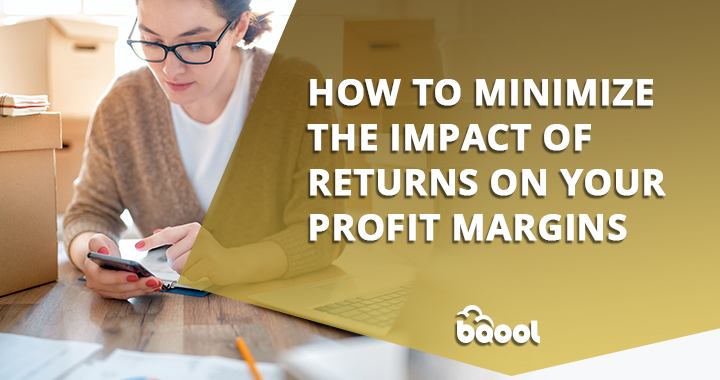How to Minimize the Impact of Returns on Your Profit Margins

We have shared some tips about how to identify your profitable products and unprofitable products to improves sales last week. The reasons to cause unprofitable products could be various, so we bring up some problems you might have and show you how to solve each problem effectively. You can find out the potential problems and learn the solutions on our YouTube channel, or in this blog post series.
One problem that many sellers face, is large amounts of refunds and returns eating into their profits. Amazon charges a refund administration fee when reimbursing you for a buyer refund. Amazon takes up to 20% of your order or US$5 for each refunded item. To learn how Amazon calculates the fee, you can visit this help page.
When you review your sales report, you see that the sales have decreased and there is a spike in refunds and refunds costs. This is a red flag and needs your attention. It means that you are selling products but not earning any profits and it’s causing you time and money.
4 basic tips to minimize the impact of Amazon returns on your profit margin
1. Identify the products with high refunds
To pinpoint the problem and reduce the refunds, the first step is to identify the product ASIN that is being refunded or returned for that period of time. You can rank the refunded or returned items by the number of refunds to see if there are any quality issues causing the high numbers.
2. Figure out the reason for return
You can analyze and identify the issues related to the products in their reviews to improve the quality and reduce returns. You can also get a report to figure out the reason for the return request by taking the following steps:
- Sign into Amazon Seller Central
- Select Fulfillment under Report, choose the Customer Concessions option, and then click on Returns
- Select the period for the report. For example, you can filter for 30 to 60 days
- Check the item in question on the report and identify the reason for the return
3. Stop advertisements for products that have higher refunds
You can also stop your advertisement for these products if the refunds are higher than your units sold as a result until you make improvements to the product.
4. Check your competitors’ pricing and listing if it’s not a product issue
Finally, if you have checked your products and there are not any quality issues with the product, then another factor you are getting refunds can be from your competitors. You can check the same category for competitor products and see if your competitors are providing a lower price for similar items causing your customers to refund. If that is the case, you can decide on your pricing strategy against your competitors.
Boost your Amazon profit and inventory health with BQool’s software
BQool BigCentral’s Profit Dashboard instantly visualizes your profitability with a detailed overview of your financial report, and it further simplifies the task for you – multiple performance rankings: Most Profitable, Most Refunded, Most Advertised, Most Reimbursed, etc. So you can identify high refunded problematic faster and improve your sales performance.
If you’re interested in a deeper dive, we have more sophisticated strategies for minimizing the impact of returns on your profit margins. Such as how to use set up an automated email campaign to decrease the likelihood of getting a negative review to avoid getting a negative review in the future. Check out this video guide!








